|
HOME: www.hiltonpond.org |
|||
THIS WEEK at HILTON POND Subscribe for free to our award-winning nature newsletter (Back to Preceding Week; on to Next Week) |
All text, maps, charts & photos © Hilton Pond Center SOUTH CAROLINA'S In late February we made a road trip from York (close to the northern border of South Carolina) all the way down to the very southern tip of the state and Hilton Head Island (with which Hilton Pond Center is sometimes confused). We took major four-lane highways nearly the whole route, crossing three of the state's four physiographic provinces--red clay Piedmont, rolling Sandhills, and ultra-flat Coastal Plain--missing only the little sliver of Blue Ridge Mountains in South Carolina's northwest corner. As we approached the coast we began to see those unmistakable signs of Carolina Lowcountry: Bald Cypress trees (a deciduous conifer naked at this time of year), Live Oaks draped with Spanish Moss, and--of course--Palmetto palms. For understandable historical reasons Palmettos were named the state tree and South Carolina is called the "Palmetto State," but as we zipped past these palms we couldn't help but think how isolated a range they have and how the rest of the state got such short shrift on this "state tree." Not to open a can of worms here, but why should all of South Carolina be nicknamed for a plant that grows naturally only in relatively few coastal locales? Why not select a new state tree, we thought, one that has universal distribution and that would be more representative of ALL of South Carolina's 46 counties?
All text, maps, charts & photos © Hilton Pond Center Admittedly, the importance to South Carolina of Sabal Palmetto, Inodes palmetto (AKA Cabbage Palmetto) dates back to the Revolutionary War. On 28 June 1776, Col. William Moultrie's Palmetto-log fort on Sullivan's Island took a heavy barrage from a British naval fleet just offshore. Had the fort been constructed of pine or hardwood, heavy cannonballs would have splintered and smashed the walls and scattered the troops. Instead, volley after volley hammered the logs and simply bounced off the palm's fibrous trunks.
All text, maps, charts & photos © Hilton Pond Center Trees, by general definition, are woody plants at least 15 feet tall with a crown not at ground level and--most relevant--with a thin living layer of cambium tissue between bark and heartwood. Those cambium layers are what show up as rings in a tree trunk's cross-section (above left). Cut through a palm log (above right) and you'll find no growth rings, nor bark or heartwood--just a mass of spongy material. In younger Palmettos and on newer parts of taller ones, instead of exterior bark there are rough, hardened, semi-sharp bases of old fronds (not visible in cross-section above). To get technical about all this, woody trees are dicots while the 2,500 or so palm species are monocots more closely related to sedges, grasses, lilies, orchids, and bamboo. So now we have at least TWO reasons to reject the Palmetto as South Carolina's state tree: 1) It grows naturally ONLY along the Atlantic Coast in a very narrow region; and, 2) it's not really a tree. With all this in mind we began pondering a REAL tree that would be more representative of the entire state, a native species that could naturally grow in any backyard South Carolina backyard east to west and north to south. To be honest, we couldn't think of that many--which was good.
All text, maps, charts & photos © Hilton Pond Center One tree with nearly universal distribution in South Carolina is Eastern Red Cedar, Juniperus virginiana (above), certainly one of the most abundant woody species here at Hilton Pond Center. This environmentally significant evergreen--common in early succession--thrives in sunny areas across the Upstate and even in the Sandhills. However, this cedar doesn't occur in several coastal counties where the Palmetto thrives, ruling it out of competition for our new state tree. Oaks and pines won't do, either--some of them are quite habitat-specific--as is the case with numerous other well-known tree species.
All text, maps, charts & photos © Hilton Pond Center Although Sweetgum, Liquidambar styraciflua, has universal distribution across the state, we doubt anyone would support its nomination; it's practically an invasive species that yields prickly little gumballs that make going barefoot in autumn so unpleasant. Besides, many observers examine Sweetgum's five-lobed leaf (above) and misidentify it as a maple, and it just wouldn't do for folks not to quickly recognize their new state tree. (Easy recognition IS one attribute of the Palmetto, we will concede.)
All text, maps, charts & photos © Hilton Pond Center As we rolled down the highways toward Hilton Head Island, roadside trees stood silent, lacking any sign they were still alive--except for one noticeable species. While all the other trees still held future leaves and flowers tightly within winter buds, Red Maples (above) from York to the coast were already in full bloom--a sure sign spring really wasn't as far away as recent winter weather suggested. Yes, we realized, Red Maple, Acer rubrum, WOULD be an excellent nominee for South Carolina's new state tree. It flowers very early in the year (in keeping with South Carolina's desire to be first in something other than primary elections),
All text, maps, charts & photos © Hilton Pond Center Having sadly tossed Red Maple from the list of South Carolina's New State Tree nominees, we thought a bit more about the whole concept while driving back toward Hilton Pond. We continued to admire all those the Red Maple flowers on the way home and fretted over our lack of a resolution until suddenly realizing the answer to our quest once again was right before our eyes. Every now and then along the highway--especially in spots with just the right amount of moisture--grew tall, stately trees that stood out from all the rest by virtue of the color of their bark. Against the darker trunks of oak and hickory, pine and elm, maple and gum, the white bark of American Sycamore (above) shined like a beacon saying: "Choose ME for state tree!"
All text, maps, charts & photos © Hilton Pond Center That's it! American Sycamore! A magnificent native tree that grows in every South Carolina county and that can be identified easily in every season by every citizen young and old because of its distinctive bark. And, significantly, every other state in which this tree grows somehow failed to claim it.
All text, maps, charts & photos © Hilton Pond Center American Sycamore, Platanus occidentalis, is a tree found naturally in the eastern half of the U.S. south of central New York. This species got amazingly large prior to the arrival of Europeans, sometimes reaching as much as 45 feet in circumference around a trunk that quite often was hollow--and big enough for a one-room livestock shelter. Sycamores are identifiable because of their exfoliating bark that peels off in large plates (above), leaving underbark in various hues from tan to gray to white. This whiteness is most noticeable on the upper half of the tree, where sunlight filtering through the canopy makes the trunk and branches seem to glow in semi-darkness. (Bark near the ground on older trees is dark brown and does not exfoliate.)
All text, maps, charts & photos © Hilton Pond Center Leaves of the American Sycamore are big and broad--up to 9" across--and almost circular (above, with unripe fruit). Usually there are five-lobes, each ending in a point; the leaf margin typically has smaller toothing. Unlike many deciduous trees, sycamore's leaves change color and then wither and turn brown before falling to earth.
All text, maps, charts & photos © Hilton Pond Center Most observers never take note of American Sycamore's flowers that occur on topmost limbs and consist of a tight cluster of almost fluffy greenish or reddish structures. Female blossoms (above) give rise to the fruit, while male flowers turn brown and soon fall earthward.
All text, maps, charts & photos © Hilton Pond Center With male and female flowers on the same tree, sycamores are self-pollinated, producing a rough-surfaced 1.5-inch spherical structure called
All text, maps, charts & photos © Hilton Pond Center Although American Sycamore grows well in any relatively moist habitat it seems to do best in riparian areas--those stream and river bottomlands (above) where soil is deep and rich. Here at Hilton Pond Center we only have two sycamores, one on a slope above the pond and the other in a muddy area below the dam that forms the impoundment--our so-called Hilton Swamp. These two specimens are about the same age and seem to be doing equally well in very different habitats, but we have noticed many roots of the upland tree are creeping along the surface of surrounding soil rather than going deep.
All text, maps, charts & photos © Hilton Pond Center American Sycamores make very nice specimen trees and focal points for a big backyard; they were often planted in cityscapes as shade trees (above), With all this in mind, and despite the potential for anthracnose infestation, we hereby nominate American Sycamore as South Carolina's New State Tree. This probably will be unsettling for traditionalists and folks in the Coastal Plain who love their Palmettos, but it's high time the rest of our state was represented by a cosmopolitan tree found from mountains to the sea. Show your support for this long-overdue initiative by planting an American Sycamore in your yard during the next few weeks (sapling at right), and by sending a Twitter message mentioning #SCsycamore as your way of casting a "Yes!" vote. (We undemocratically announce that any "Nay" votes will be declared invalid!) All text, maps, charts & photos © Hilton Pond Center POSTSCRIPT: Gasp! We just noticed Florida ALSO has Sabal Palmetto as its "state tree." This provides South Carolinians a third and equally valid reason to give the Palmetto the boot! NOTE: During the last half of February 2015 we banded a mind-boggling number of winter finches, but we were astounded at how many American Goldfinches showed site fidelity, returning to Hilton Pond Center after being banded here as many as six years ago. Please scroll on down for a peek at the amazing list of returns.
Checks can be sent to Hilton Pond Center at: All contributions are tax-deductible on your |
|---|
|
"This Week at Hilton Pond" is written and photographed by Bill Hilton Jr., executive director of Hilton Pond Center for Piedmont Natural History
|
|
|
Please refer "This Week at Hilton Pond" to others by clicking on this button: |
Comments or questions about this week's installment? Send an E-mail to INFO. (Be sure to scroll down for a tally of birds banded/recaptured during the period, plus other nature notes.) |


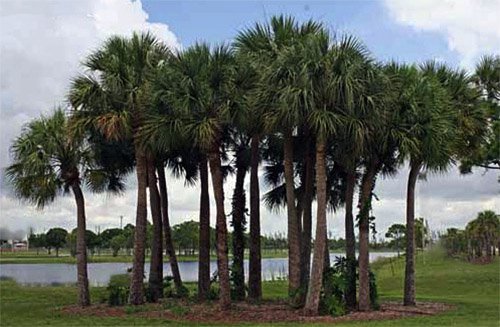

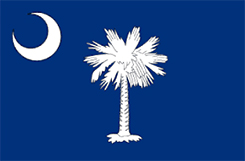 Thus, the Palmetto palm saved the day and almost a century later in 1861 was added to the National flag of South Carolina when it seceded from the Union.
Thus, the Palmetto palm saved the day and almost a century later in 1861 was added to the National flag of South Carolina when it seceded from the Union. 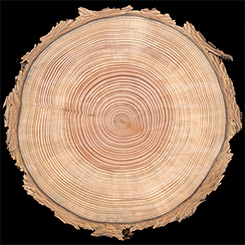
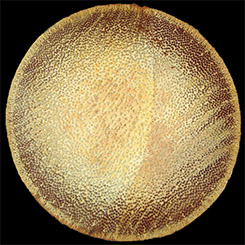
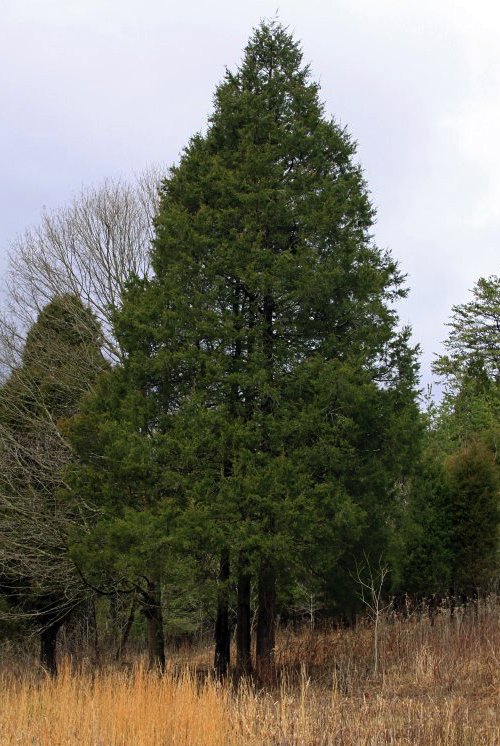
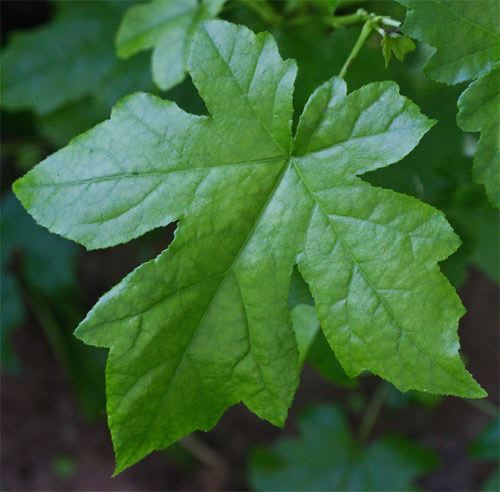
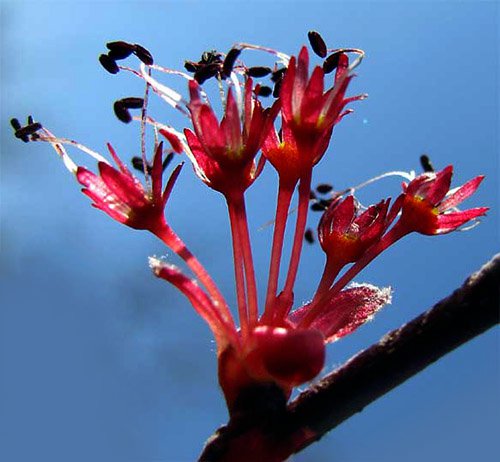
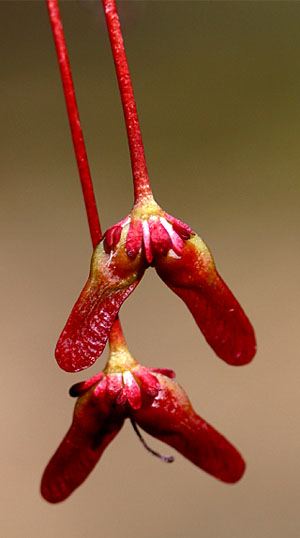 its wood has multiple uses, it is long-lived, it grows fast and strong, its limbs and leaves support all sorts of birds and other wildlife, and its dark green foliage casts welcome shade when weather turns hot. On top of all that, Red Maples also produce those cool little "helicopters"--winged seeds
its wood has multiple uses, it is long-lived, it grows fast and strong, its limbs and leaves support all sorts of birds and other wildlife, and its dark green foliage casts welcome shade when weather turns hot. On top of all that, Red Maples also produce those cool little "helicopters"--winged seeds 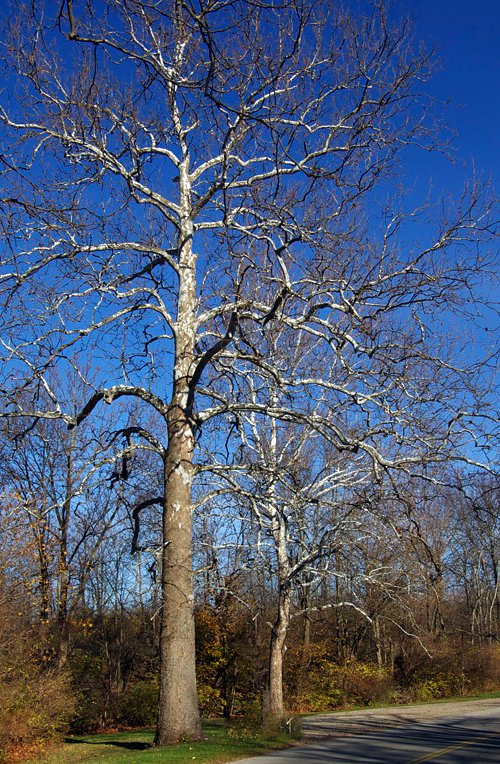
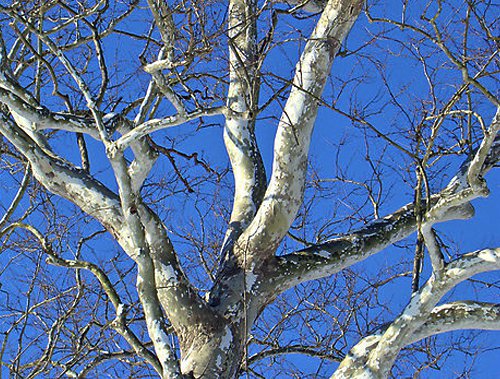
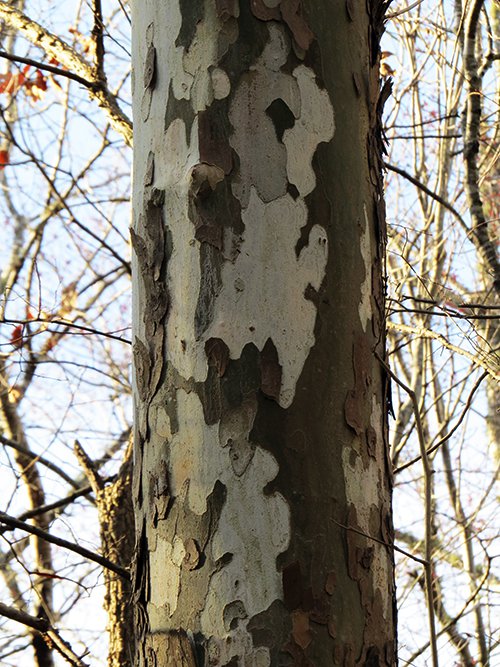
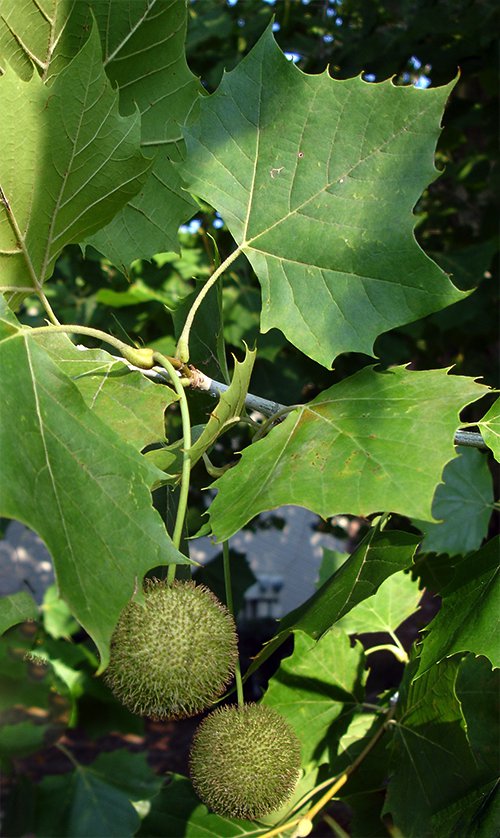
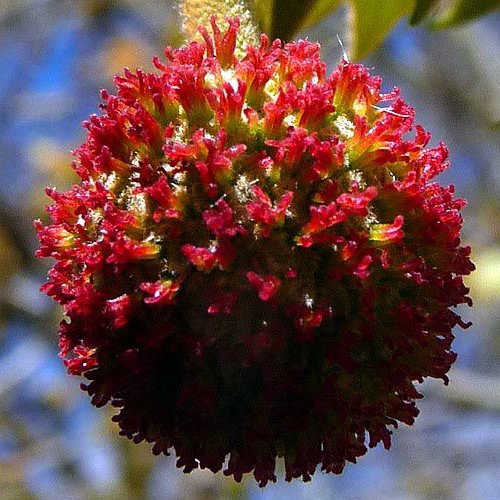
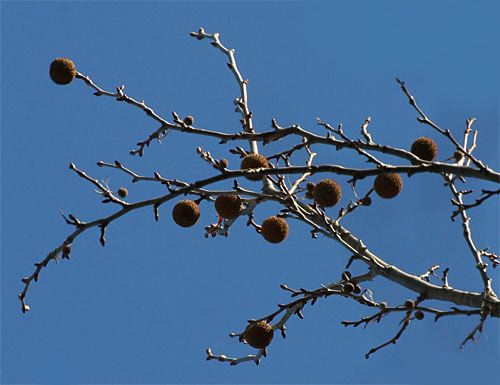
 a "buttonball"
a "buttonball" 
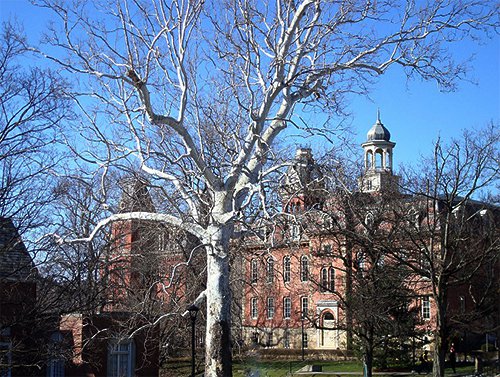
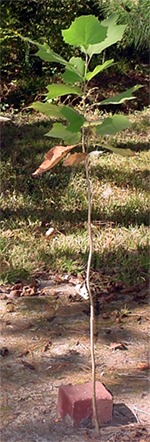 but a non-native fungus called Plane Anthracnose can affect leaves in spring and cause foliage to die and fall from the tree. Lost leaves are usually replaced with a new batch that greens up by mid-summer.
but a non-native fungus called Plane Anthracnose can affect leaves in spring and cause foliage to die and fall from the tree. Lost leaves are usually replaced with a new batch that greens up by mid-summer. 










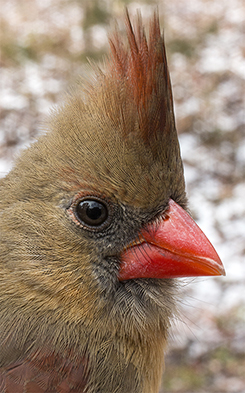
 Oct 15 to Mar 15:
Oct 15 to Mar 15: